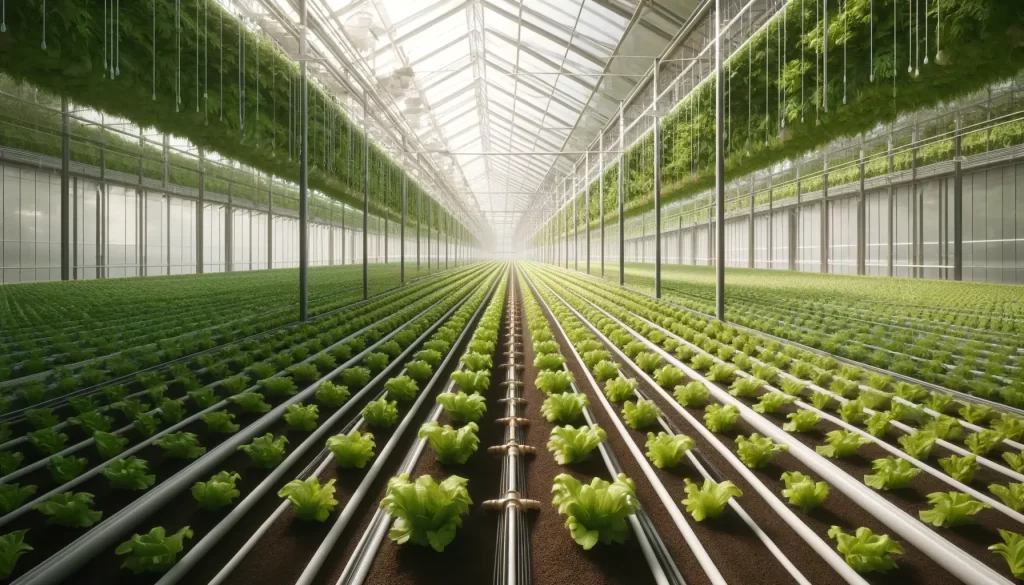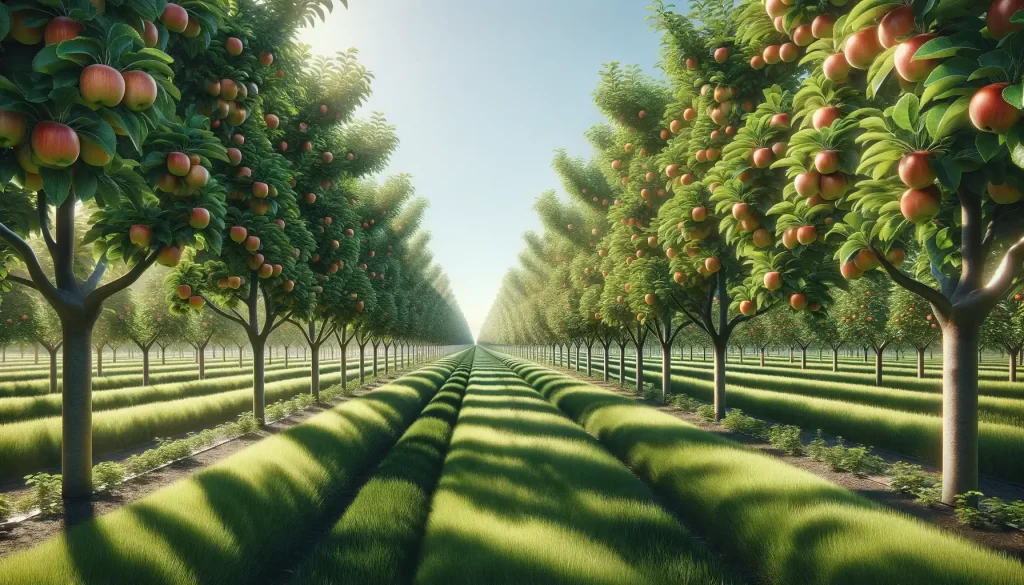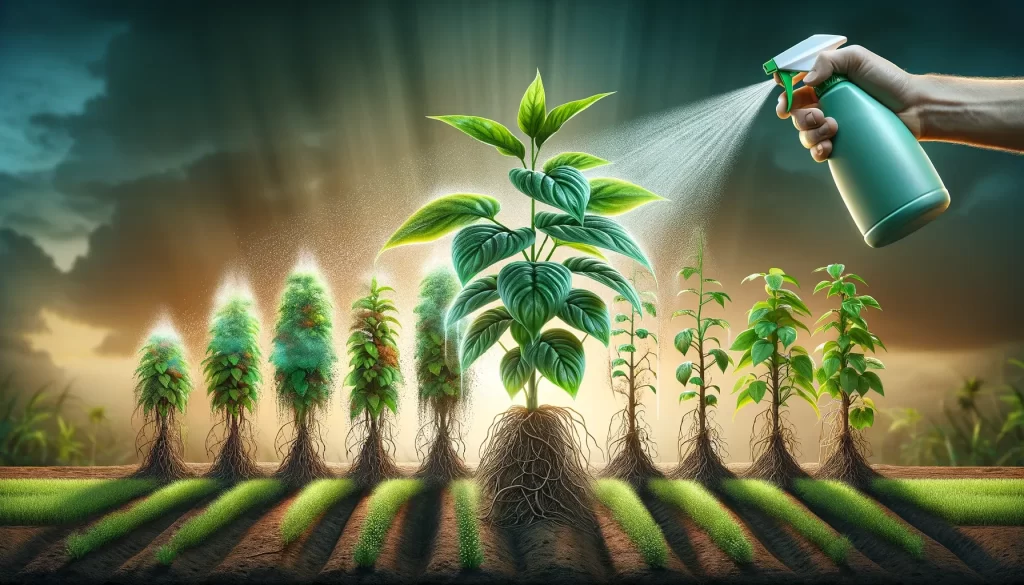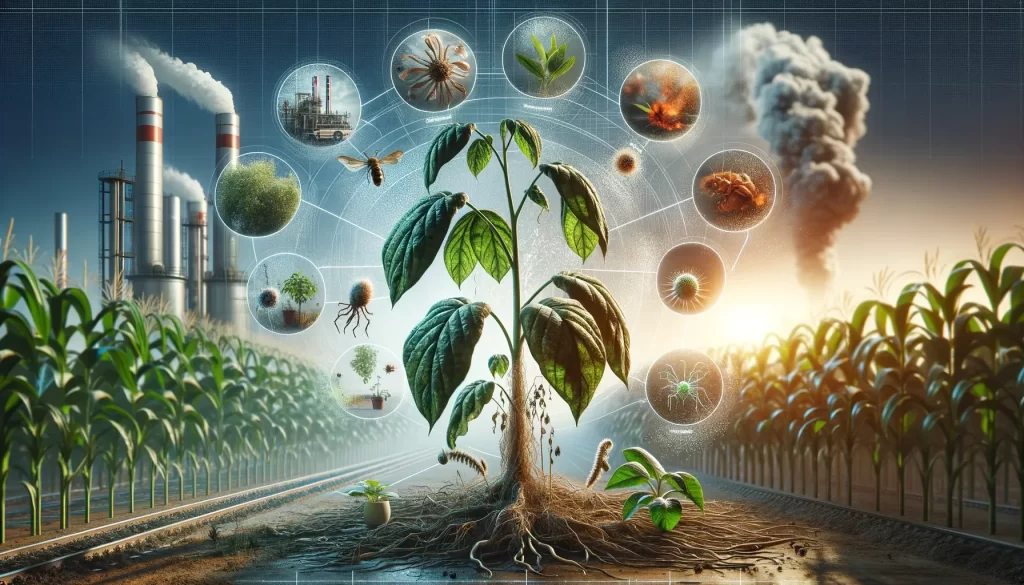The Importance of Phosphorus and Potassium for Plants
Phosphorus and potassium are two macronutrients essential for the growth and development of plants. Phosphorus plays a role in many important biochemical reactions such as photosynthesis, root development and energy transfer. Potassium performs many important functions such as protein synthesis, water retention and resistance to diseases. Adequate phosphorus and potassium intake ensures healthy and productive growth of plants.
Symptoms of Phosphorus and Potassium Deficiency
Phosphorus and potassium deficiency can cause many symptoms in plants. These symptoms are:
- Slow growth: Plants grow slower than normal and appear weak.
- Change in leaf color: Yellowing, reddening or bruising may be observed on the leaves.
- Necrosis: Necrotic spots may occur on leaves and stems.
- Low yield: The productivity and quality of the plants decrease.
Advantages of Liquid Fertilizers
Liquid fertilizers have many advantages compared to solid fertilizers . These advantages are:
- Faster nutrient uptake: Liquid fertilizers dissolve in water and are absorbed more quickly and easily by plants.
- More homogeneous distribution: Liquid fertilizers are distributed homogeneously by mixing with irrigation water or by applying directly to the soil.
- Easier application: Liquid fertilizers can be easily applied with special equipment.
- Less environmental pollution: Liquid fertilizers create less environmental pollution compared to solid fertilizers.
Liquid Fertilizer Types Containing Phosphorus and Potassium
Liquid fertilizers containing phosphorus and potassium are produced in different formulations and with different nutrient ratios. The most commonly used liquid fertilizer types containing phosphorus and potassium are:
Monoammonium Phosphate (MAP)
It is a liquid fertilizer with high phosphorus content. It is generally used on field crops and fruit trees.
Diammonium Phosphate (DAP)
It is a liquid fertilizer containing both phosphorus and nitrogen. It is especially used in field crops such as corn, wheat and soybean.
Potassium Dihydrogen Phosphate (KH2PO4)
It is a liquid fertilizer containing both phosphorus and potassium. It is especially used in vegetables and fruits.
Potassium Monohydrogen Phosphate (K2HPO4)
It is a liquid fertilizer containing potassium and phosphorus. It is especially used in plants grown in greenhouses.
Potassium Sulfate (K2SO4)
It is a liquid fertilizer with high potassium content. It is especially used in plants with chloride sensitivity.
Usage Areas of Liquid Fertilizers Containing Phosphorus and Potassium
Liquid fertilizers containing phosphorus and potassium can be used on many different types of plants, including field crops, garden crops, fruit trees and vegetables.
Field Crops: Liquid fertilizers containing phosphorus and potassium are used to increase yield and quality in field crops such as corn, wheat, soybean, cotton and sunflower.
Garden Plants: Liquid fertilizers containing phosphorus and potassium are used to increase flowering and coloration in garden plants such as roses, begonias and petunias.
Fruit Trees: Liquid fertilizers containing phosphorus and potassium are used to increase fruit yield and quality in fruit trees such as apple, pear, plum, grape.
Vegetables: Liquid fertilizers containing phosphorus and potassium are used to increase yield and quality in vegetables such as tomatoes, peppers, cucumbers and eggplants.
Liquid Fertilizer Application Methods
Liquid fertilizers can be applied by different methods. The most common application methods are:
Foliar application: Liquid fertilizer is applied to the leaves of the plants with the help of a spray. This method ensures rapid absorption of nutrients by plants.
Soil application: Liquid fertilizer is applied to the soil and absorbed by the plants through the roots. This method is the most common liquid fertilizer application method.
Application by drip irrigation: Liquid fertilizer is mixed with irrigation water and given to the plants. This method saves water and fertilizer and prevents environmental pollution.
Things to Consider
Some points to consider in liquid fertilizer applications are:
- Application of fertilizer at the right dose and at the right time
- Application equipment must be clean and well-maintained
- Suitable weather conditions
- Be careful not to contaminate fertilizer into water sources
Benefits of Using Liquid Fertilizer
There are many benefits to using liquid fertilizer. These benefits are:
- Faster nutrient uptake: Liquid fertilizers are absorbed more quickly and easily by plants.
- More homogeneous distribution: Liquid fertilizers dissolve in water and distribute homogeneously.
- Easier application: Liquid fertilizers can be easily applied with special equipment.
- Less environmental pollution: Liquid fertilizers create less environmental pollution compared to solid fertilizers.
Future Trends
Liquid fertilizers containing phosphorus and potassium will continue to play an important role in agriculture. In the future, it is expected that the use of liquid fertilizers will become more widespread and new generation liquid fertilizers will be developed.
New Generation Liquid Fertilizers
New generation liquid fertilizers are designed to have more controlled release, be more environmentally friendly and have higher efficiency. These fertilizers will increase yield and quality by better meeting the nutritional needs of plants.
Precision Agriculture Practices
Precision agriculture practices enable the more effective use of liquid fertilizers. will provide. These practices include creating fertilization programs based on soil and plant analysis and applying fertilizers only in areas where they are needed.
Sustainable Agriculture
Liquid fertilizers can play an important role in sustainable agricultural practices. The use of liquid fertilizers, which create less environmental pollution and provide higher efficiency, will contribute to making agriculture more sustainable.
Conclusion
Liquid fertilizers containing phosphorus and potassium meet the nutritional needs of plants and increase yield and quality. Liquid fertilizers have many benefits and have many advantages when applied correctly.
As Greenlive, we are a company that produces plant nutrition products. We especially produce liquid and organic fertilizers. Our products are specially formulated to best meet the nutritional needs of plants. Our expert team provides you with free consultancy services on liquid fertilizer selection and application.
You can contact us to get more information about our liquid fertilizers or detailed information about our products.
You can browse our products, consult our expert team and place an order by visiting our website.
Meet the nutritional needs of your plants and increase yield and quality with Greenlive!
Some of our products and their usage areas:
- Greenlive Liquid Phosphorus and Potassium Fertilizer: Ideal for field crops, garden plants, fruit trees and vegetables. Application can be made from leaves or soil.
- Greenlive Organic Liquid Fertilizer: Meets the nutritional needs of plants naturally. It is applied to the soil.
- Greenlive Phosphorous Liquid Fertilizer: It is necessary for the root development and flowering of plants. Application can be made from leaves or soil.
- Greenlive Potassium Liquid Fertilizer: Increases the fruit and vegetable yield of plants. Application can be made from leaves or soil.
- Benefits of Using Liquid Fertilizer:
- Faster food intake
- More homogeneous distribution
- Easier application
- Less environmental pollution
- Future Trends:
- New generation liquid fertilizers
- Precision farming practices
- Sustainable agriculture
- Dictionary:
- Phosphorus: A macronutrient that plays a role in many important biochemical reactions of plants such as photosynthesis, root development and energy transfer.
- Potassium: A macronutrient that performs many important functions of plants such as protein synthesis, water retention and resistance to diseases.
- Liquid fertilizer: A type of fertilizer containing nutrients dissolved in water.
- Monoammonium phosphate (MAP): A liquid fertilizer with a high phosphorus content.
- Diammonium phosphate (DAP): A liquid fertilizer containing both phosphorus and nitrogen.
- Potassium dihydrogen phosphate (KH2PO4):A liquid fertilizer containing both phosphorus and potassium.
- Potassium monohydrogen phosphate (K2HPO4): A liquid fertilizer containing potassium and phosphorus.
- Potassium sulfate (K2SO4): A liquid fertilizer with high potassium content.
- Foliar application: Applying liquid fertilizer to the leaves of plants with the help of a spray.
- Soil application: Applying liquid fertilizer to the soil and absorbing it by the plants through the roots.
- Application by drip irrigation: Mixing liquid fertilizer with irrigation water and giving it to the plants.










